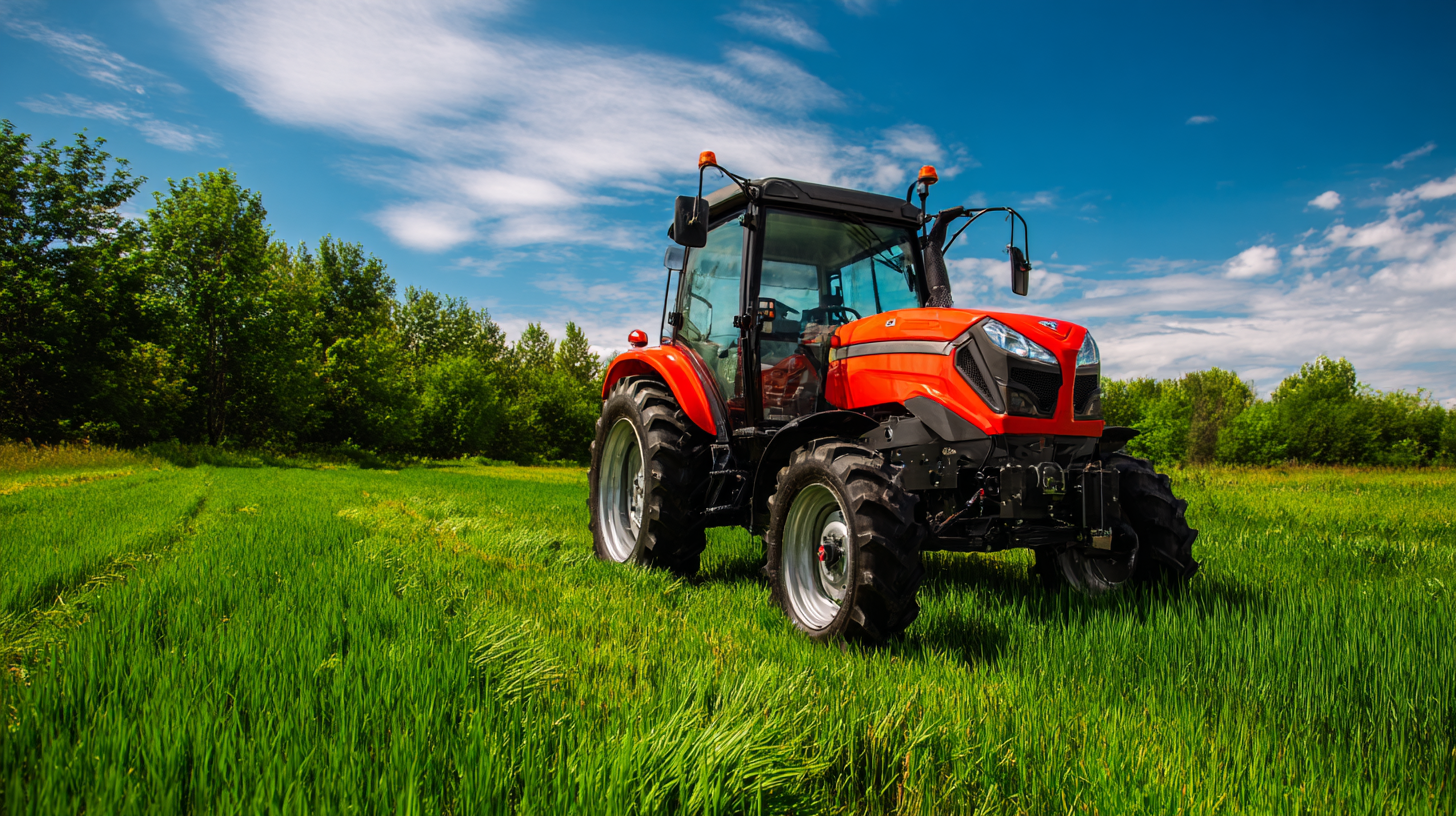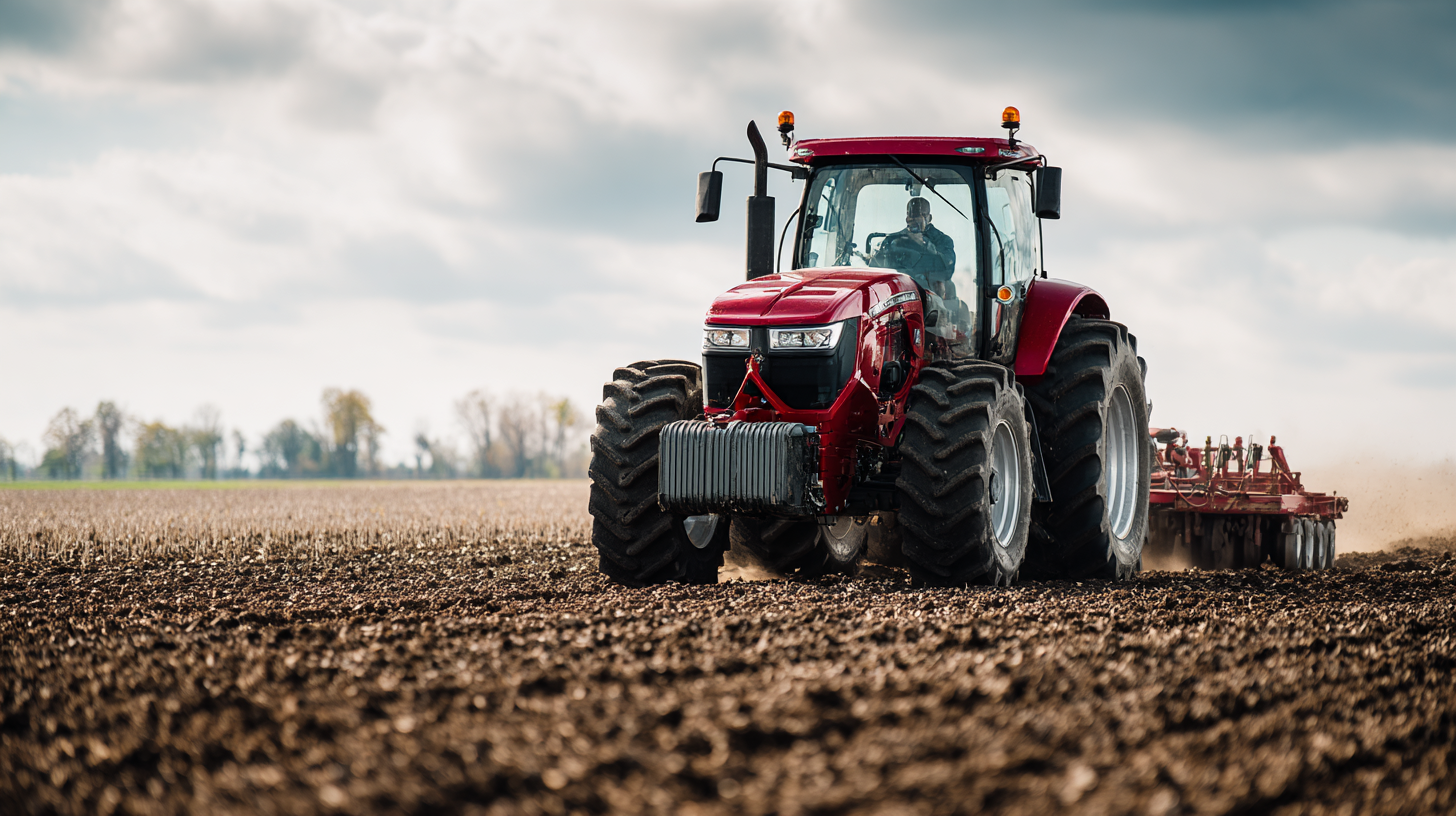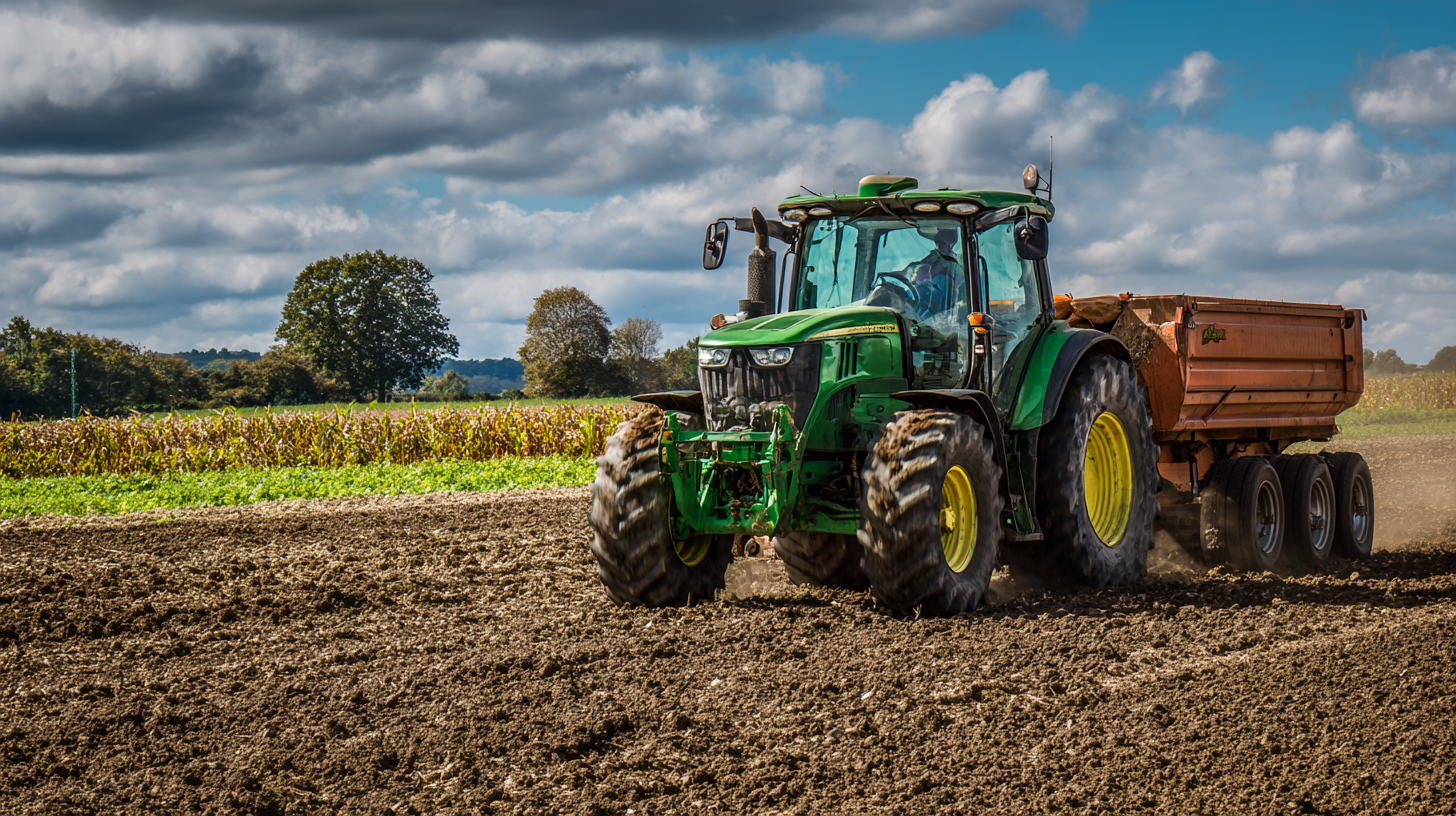What is a compact tractor and how it revolutionizes modern farming globally
The compact tractor is transforming the way modern farming operations are conducted around the globe, significantly impacting efficiency and productivity. According to a report by ResearchAndMarkets, the global compact tractor market is projected to grow at a CAGR of 4.8% from 2021 to 2026, reflecting the increasing adoption of these versatile machines in agricultural practices.

Compact tractors, designed for smaller spaces and versatile applications, enable farmers to perform tasks ranging from tilling and mowing to hauling and loading with ease. As agriculture increasingly embraces technology and sustainability, the compact tractor emerges as a vital tool, empowering both smallholders and large-scale operators to meet the demands of a rapidly evolving food system.
This blog will delve into the functionalities, advantages, and innovations surrounding compact tractors, illustrating how they are shaping the future of farming worldwide.
Understanding Compact Tractors: Definition and Key Features
Compact tractors have emerged as essential tools in modern agriculture, providing versatility and efficiency for farmers around the globe. Defined as smaller, more maneuverable versions of traditional tractors, compact tractors typically range from 20 to 50 horsepower. They are designed for a variety of tasks, from tilling and mowing to hauling materials. These tractors are particularly beneficial for small to medium-sized farms, allowing farmers to perform a range of operations without the need for multiple larger machines.
Key features of compact tractors include their compact size, ease of use, and adaptability with numerous attachments. Industry reports, such as those from the American Society of Agricultural and Biological Engineers, indicate that the global compact tractor market was valued at approximately $4 billion in 2021 and is projected to grow at a CAGR of 6.5% through 2028. This growth is attributed to the increasing adoption of advanced farming practices and the need for efficient land management. Additionally, compact tractors often come with features like 4WD capabilities and ergonomic design, enhancing their functionality and user experience. This combination of practicality and innovation positions compact tractors as a revolutionary force in the modern farming landscape.
The Evolution of Farming: How Compact Tractors Changed the Game
The evolution of farming has been dramatically influenced by the introduction and development of compact tractors. These innovative machines have redefined the agricultural landscape by enhancing efficiency and productivity on smaller farms. As of 2025, precision agriculture technologies, integrated with compact tractors, are allowing farmers to optimize crop yields like never before. Industry reports indicate that the adoption of data-driven tools and automation has led to an estimated 20% increase in efficiency across various farming operations. This has been particularly beneficial for small to mid-sized farms, which can leverage compact tractors for diverse tasks, from planting to harvesting.

Historically, the tractor itself has undergone significant evolution since the first gas-powered model was introduced in 1892, marking a turning point in agricultural practices. Fast forward to modern times, the compact tractor embodies advanced features that enhance sustainability. The agricultural machinery industry is witnessing trends that favor sustainable practices, with innovations aimed at reducing resource consumption while maximizing output. For instance, modern tractors are designed to use up to 30% less fuel than their predecessors while still delivering superior performance. These advancements signal a transformative shift in farming practices, making compact tractors pivotal in the journey towards more sustainable agriculture globally.
Versatile Applications: From Small Farms to Large Agricultural Operations
 Compact tractors have become vital tools in modern farming, offering versatility that caters to both small and large agricultural operations. According to a report by the Association of Equipment Manufacturers, compact tractors, which range in horsepower from 25 to 50 HP, make up over 25% of the sales in the tractor market, underscoring their popularity in diverse farming applications. These tractors are equipped to handle a variety of tasks, including tilling, mowing, and transporting goods, making them suitable for small family-run farms as well as larger agricultural setups.
Compact tractors have become vital tools in modern farming, offering versatility that caters to both small and large agricultural operations. According to a report by the Association of Equipment Manufacturers, compact tractors, which range in horsepower from 25 to 50 HP, make up over 25% of the sales in the tractor market, underscoring their popularity in diverse farming applications. These tractors are equipped to handle a variety of tasks, including tilling, mowing, and transporting goods, making them suitable for small family-run farms as well as larger agricultural setups.
For farmers looking to maximize efficiency, understanding the range of attachments that can be utilized with compact tractors is essential. For instance, investing in a front-end loader can significantly streamline loading and unloading tasks, while a rotary cutter can enhance land maintenance. Tip: Always evaluate the specific needs of your farming operation before choosing attachments to ensure you invest wisely.
Furthermore, compact tractors contribute to sustainable farming practices by enabling precision agriculture techniques. According to a study by the American Society of Agricultural and Biological Engineers, implementing compact tractors for tasks like soil sampling and crop monitoring can lead to a 30% increase in productivity. Tip: Keep abreast of technological advancements in compact tractors, as new features such as GPS and automated controls can further improve farming efficiency and sustainability.
Economic Benefits: Cost-Effectiveness and Efficiency of Compact Tractors
Compact tractors have surged in popularity among farmers worldwide due to their remarkable cost-effectiveness and efficiency. According to a report by Market Research Future, the global compact tractor market is projected to grow significantly, with an expected CAGR of 4.5% from 2021 to 2028. This growth can largely be attributed to farmers seeking versatile machinery that offers reduced operating costs and the ability to perform a wide variety of tasks, from tillage to landscaping.
The economic benefits of using compact tractors are substantial. For instance, these tractors typically consume less fuel than their larger counterparts, resulting in significant savings over time. A study by the American Society of Agricultural and Biological Engineers highlights that compact tractors can increase productivity by up to 30% due to their maneuverability in small fields and around obstacles.
Additionally, their affordability makes them accessible for small to medium-sized farms, enabling these farmers to invest in advanced technology without the financial burden associated with larger machinery. This shift not only empowers farmers but also enhances their competitive edge in the agricultural sector.
Future Trends: Innovations in Compact Tractor Technology and Impact on Farming
Compact tractors have significantly enhanced modern farming practices, driving innovation and efficiency across various agricultural sectors. These versatile machines are designed for a wide range of tasks, from tilling and planting to fertilizing and pest control. With ongoing advancements in technology, compact tractors are now equipped with sophisticated features like GPS navigation, automated steering, and smart sensors, allowing farmers to operate with precision and minimal labor. This shift towards mechanization is not only streamlining agricultural processes but also improving yield and productivity.
The global market for agricultural machinery, particularly compact tractors, is on an upward trend. By 2030, the agricultural tractor market is projected to grow substantially, reflecting a shift in farming practices toward more automated solutions. Coupled with the expansion in agricultural robots, which are expected to reach a market size of $263.5 billion by 2032, the future of farming is leaning heavily on technological integration. As farmers increasingly adopt these innovations, the compact tractor will play a crucial role in the evolution of sustainable and efficient agricultural practices.
What is a compact tractor and how it revolutionizes modern farming globally - Future Trends: Innovations in Compact Tractor Technology and Impact on Farming
| Feature | Description | Impact on Farming |
|---|---|---|
| Compact Size | Designed for small farms and tight spaces, allowing for greater maneuverability. | Increased efficiency in crop maintenance and enhanced accessibility on diverse terrains. |
| Versatility | Compatible with a variety of attachments for different farming tasks. | Reduces the need for multiple machines, saving costs and space. |
| Fuel Efficiency | Engine designs that optimize fuel consumption. | Lower operational expenses and reduced carbon footprint. |
| Advanced Technology | Incorporates GPS, automated steering, and data analytics tools. | Enhanced precision in farming practices, improving crop yields. |
| Ease of Use | User-friendly controls and fewer moving parts for maintenance. | Attracts new farmers and enables more efficient farming techniques. |
Related Posts
-

Maximizing Efficiency with Utility Tractors for Modern Agricultural Practices
-

Exploring Unique Applications of Round Balers in Modern Agriculture
-

How to Maximize Efficiency with Your Hay Baler for Higher Crop Yields
-

Essential Checklist for Choosing the Right Small Front Loader Tractor
-

What Are the Advantages of Using Small Utility Tractors for Your Farm
-

The Ultimate Guide to Finding the Most Affordable Compact Tractor for Your Needs